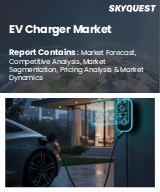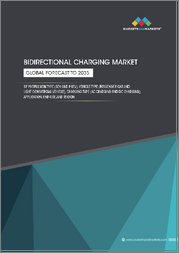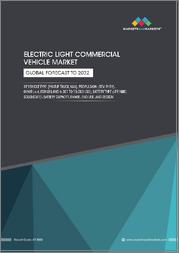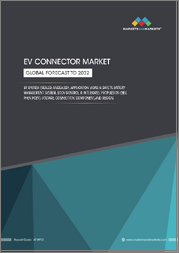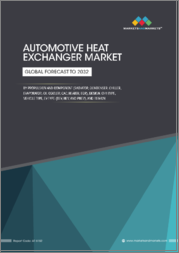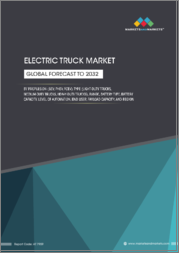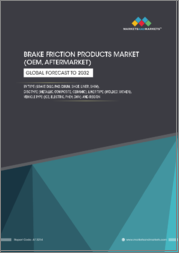
|
시장보고서
상품코드
1422472
세계의 플러그인 하이브리드 전기자동차(PHEV) 시장, 규모, 예측(2024-2030년), 산업 동향, 점유율, 성장, 인사이트, 인플레이션의 영향, 기업 분석Plug-in Hybrid Electric Vehicle Market, Size, Global Forecast 2024-2030, Industry Trends, Share, Growth, Insight, Impact of Inflation, Company Analysis |
||||||
세계 플러그인 하이브리드 전기자동차(PHEV) 시장 규모는 2030년까지 약 1,894억 7,000만 달러에 달할 것으로 예측됩니다. 플러그인 하이브리드 전기자동차(PHEV) 시장은 전통적인 이동성과 전기 이동성이 교차하는 역동적인 시장으로, PHEV는 내연기관 엔진과 전기 추진력을 완벽하게 통합하여 운전자에게 두 가지 전원 공급 장치의 유연성을 제공합니다. 이 이중 기능은 전기 주행거리를 연장하고 완전 전기 모터의 주행거리 불안감을 완화하는 등 PHEV는 전력 효율을 높이고 배기가스를 줄이는 과도기적 솔루션으로 전 세계적으로 지지를 받고 있습니다. 자동차 제조업체들은 PHEV 기술에 지속적으로 자금을 투자하여 배터리 성능을 개선하고 하이브리드 시스템을 개선하고 있습니다. 진화하는 자동차 환경과 높아지는 환경 인식으로 인해 PHEV 시장은 지속 가능한 전기화의 미래로 가는 다리가 되고 있습니다.
세계 플러그인 하이브리드 전기자동차(PHEV) 시장 규모는 2024-2030년 연평균 10.82% 성장할 것으로 예상됩니다.
기후 변화에 대한 우려가 커지면서 고객들은 연비 효율이 높은 솔루션에 관심을 보이고 있습니다. 플러그인 하이브리드 전기자동차(PHEV)는 전기와 연료를 원활하게 통합하여 배출가스를 억제하고 화석 연료에 대한 의존도를 낮추는 매력적인 선택이 되고 있습니다. 특히 PHEV는 대도시 주행 시나리오에서 빛을 발하며, 빠른 출퇴근을 위해 전기 자동차를 활용하여 배출 가스와 소음 오염 물질을 크게 줄입니다. 이러한 도시 중심적 이점은 PHEV를 지속가능성과 일상적인 교통의 실용성을 조화시키려는 대도시 거주자 및 환경 친화적인 운전자들에게 최고의 선택이 될 수 있습니다.
또한, 배터리 기술의 중요한 혁신은 플러그인 하이브리드 전기자동차량(PHEV)의 파노라마를 새롭게 바꾸고 있으며, 전기 구동 방식과 다양한 동력 프로파일을 통해 PHEV는 전기차와 연료 엔진의 시너지 효과로 역동적인 가속과 향상된 연료 효율로 표준 연료 차량 대신 매력적인 대안이 되고 있습니다. 향상되어 표준 연료 차량에 대한 매력적인 대안이 되고 있습니다. 동시에 전 세계적으로 충전 인프라가 확대되면서 PHEV 소유자의 '주행거리 불안' 문제를 해결하고 전기화로의 원활한 전환을 촉진할 수 있습니다. 이 세 가지 요소의 결합으로 PHEV는 첨단 기술을 활용한 고성능의 선택이 되었고, 보다 지속 가능하고 효율적인 운송을 향한 자동차 산업의 역학을 반영하여 점점 더 쉽게 이용할 수 있게 되었습니다.
세계 교통수단의 전동화 전환은 중국의 자동차 시장 확대와 전기자동차(EV)에 대한 정부의 강력한 지원으로 아시아태평양이 주도하고 있습니다. 유럽과 북미는 자동차 제조업체의 부상과 지속 가능한 모빌리티에 대한 고객의 관심 증가에 힘입어 그 뒤를 잇고 있습니다. 각국 정부는 가이드라인과 인센티브를 통해 전기차 및 플러그인 하이브리드 전기자동차량(PHEV)을 적극 장려하고 있으며, 미국에서는 PHEV 구매에 대한 연방 세금 공제를 제공합니다. 는 PHEV 기술에 많은 자금을 투자하고 있으며, 다양한 고객의 선택에 부응하기 위해 새로운 트렌드를 도입하고 현재의 기술을 개선하고 있습니다. 이러한 이유로 2023년 플러그인 하이브리드 전기자동차(PHEV) 시장 규모는 923억 3,000만 달러에 달할 것으로 예상됩니다.
세계 플러그인 하이브리드 전기자동차(PHEV) 시장에서 중저가가 주요 부문으로 부상하고 있습니다.
차종에 따라 플러그인 하이브리드 전기자동차(PHEV) 시장은 저가형, 중저가형, 고급형으로 나뉩니다. 세계 중저가 플러그인 하이브리드 전기자동차(PHEV) 시장은 저렴한 가격과 우수한 전기화 기술의 균형을 추구하는 거대한 소비자층을 대상으로 합니다. 중저가 PHEV는 비용 친화적인 옵션과 고급 옵션 사이에 위치하며, 성능 저하 없이 효율적인 성능을 원하는 비용에 민감한 고객들을 끌어들이고 있습니다. 이 차급은 혼다, 포드, 현대자동차와 같은 자동차 제조업체들이 전기 성능과 기존 주행거리의 매력적인 조합을 제공하는 경쟁 트렌드를 도입하면서 인지도가 급상승하고 있습니다. 중저가 PHEV 클래스는 중요한 시장 틈새 시장의 한 예이며, 전 세계 전동화 교통수단의 대폭적인 보급에 크게 기여하고 있습니다.
이 보고서는 세계의 플러그인 하이브리드 전기자동차(PHEV) 시장을 조사했으며, 시장 역학, 부문, 지역 및 기업에 대한 종합적인 분석을 제공합니다.
목차
제1장 서론
제2장 조사 방법
제3장 주요 요약
제4장 시장 역학
- 성장 촉진요인
- 과제
제5장 플러그인 하이브리드 전기자동차(PHEV) 시장
제6장 시장 점유율 - 플러그인 하이브리드 전기자동차(PHEV) 시장
- 차량 클래스별
- 차량 유형별
- 국가별
제7장 차량 클래스 - 플러그인 하이브리드 전기자동차(PHEV) 시장
- 저가격
- 중가격
- 고가격
제8장 차량 유형 - 플러그인 하이브리드 전기자동차(PHEV) 시장
- SUV
- MPV 및 밴
- 중형차 및 대형차
- 소형차
제9장 국 - 플러그인 하이브리드 전기자동차(PHEV) 시장
- 북미
- 미국
- 캐나다
- 유럽
- 프랑스
- 독일
- 이탈리아
- 스페인
- 영국
- 벨기에
- 네덜란드
- 터키
- 아시아태평양
- 중국
- 일본
- 인도
- 한국
- 태국
- 말레이시아
- 인도네시아
- 호주
- 뉴질랜드
- 라틴아메리카
- 브라질
- 멕시코
- 아르헨티나
- 중동 및 아프리카
- 사우디아라비아
- 아랍에미리트
- 남아프리카공화국
- 기타 지역
제10장 Porter의 Five Forces 분석 - 플러그인 하이브리드 전기자동차(PHEV) 시장
제11장 SWOT 분석 - 플러그인 하이브리드 전기자동차(PHEV) 시장
제12장 주요 기업 분석
- Tesla
- BMW Group
- BYD Company Ltd.
- Mercedes-Benz Group AG
- Ford Motor Company
- General Motor Company
- Nissan Motor Co. Ltd
- Toyota Motor Corporation
Plug-In Hybrid Electric Vehicle Market Size is projected to value around US$ 189.47 Billion by 2030, according to Renub Research. The Plug-in Hybrid Electric Vehicle (PHEV) market is a dynamic quarter on the intersection of traditional and electric mobility. PHEVs seamlessly integrate inner combustion engines with electric propulsion, providing drivers with the flexibility of both electricity sources. This dual capability extends electric range, mitigating range anxiety prevalent in complete electric motors. PHEVs have received traction globally as a transitional solution, promoting power efficiency and reducing emissions. Automakers continue to spend money on PHEV technology, improving battery capabilities, and refining hybrid systems. With an evolving automobile landscape and developing environmental cognizance, the PHEV market serves as a bridge towards a sustainable, electrified future.
Global Plug-In Hybrid Electric Vehicle Market is anticipated to expand at a CAGR of 10.82% from 2024 to 2030
Amid escalating climate change worries, customers are gravitating closer to fuel-efficient solutions. Plug-in Hybrid Electric Vehicles (PHEVs) become a compelling preference, seamlessly integrating electric and fuel power to curtail emissions and lessen reliance on fossil fuels. PHEVs, in particular, shine in metropolise driving scenarios, leveraging electric vehicles for quick commutes and significantly lowering emissions and noise pollutants. This urban-centric advantage positions PHEVs as champions for metropolis dwellers and environmentally aware drivers looking for a harmonious balance between sustainability and the practicality of their everyday transportation alternatives.
Further, pivotal breakthroughs in battery technology are remodeling the panorama for Plug-in Hybrid Electric Vehicles (PHEVs), extending their electric-powered variety, and broadening their enchantment across diverse motive force profiles. The synergy of electric vehicles and fuel engines in PHEVs gives dynamic acceleration and enhances gas efficiency, providing a compelling alternative to standard fuel-powered cars. Simultaneously, the global enlargement of charging infrastructure addresses "range anxiety" issues for PHEV proprietors, fostering a seamless transition to electrified use. As these three factors converge, PHEVs become technologically advanced, high-performing, and increasingly available alternatives, reflecting the evolving dynamics in the automobile industry toward more sustainable and efficient transportation.
In the global shift towards electrified transportation, Asia-Pacific, led by China's widespread vehicle market and sturdy government aid for Electric Vehicles (EVs), takes the lead. Europe and North America followed suit, propelled by mounted automakers and developing customer interest in sustainable mobility. Governments worldwide actively promote EVs and Plug-in Hybrid Electric Vehicles (PHEVs) through guidelines and incentives, with the U.S. providing federal tax credits for PHEV purchases. Significant players like Toyota, Ford, General Motors, and Hyundai heavily spend money on PHEV technology, introducing new trends and refining current ones to cater to diverse customer choices, signifying a transformative phase in the international automobile landscape. Hence, the Plug-in Hybrid Electric Vehicles Market was US$ 92.33 Billion in 2023.
Mid-priced vehicle class emerges as a pivotal segment in the global Plug-in Hybrid Electric Vehicles (PHEV) market
By vehicle class, the Plug-in Hybrid Electric Vehicles Market is fragmented into low-priced, Mid-Priced, and Luxury. The global market for mid-priced plug-in hybrid electric vehicles is catering to a vast consumer base searching for a balance between affordability and superior electrified technology. Positioned among cost-friendly options and luxury counterparts, mid-priced PHEVs enchant cost-aware customers desiring efficient capabilities without compromising performance. This class witnesses a surge in recognition as automakers like Honda, Ford, and Hyundai introduce competitive trends, imparting an attractive combo of electrical performance and traditional driving range. The mid-priced PHEV class exemplifies a vital market niche, contributing extensively to the substantial adoption of electrified transportation globally.
SUVs constitute a formidable presence in the global Plug-in Hybrid Electric Vehicles (PHEV) market, offering a compelling fusion of versatility and sustainability
By car type, the Plug-in Hybrid Electric Vehicles Market is categorized into SUV, MPV & Vans, Midsize and large Cars, and Small and compact Cars. The SUV car kind caters to various client alternatives, combining the practicality of an SUV with the efficient benefits of the PHEV technology. Renowned automakers, which include Tesla, Volvo, and Mitsubishi, have brought PHEV SUV models, offering sturdy electric-powered capabilities and spacious interiors. The SUV segment in the PHEV market is witnessing notable growth, driven by a growing demand for efficient options without compromising the commanding presence, application, and driving experience SUV lovers seek.
United States is experiencing growth in the global plug-in hybrid electric vehicles (PHEVs) market
By country, the Plug-in Hybrid Electric Vehicles Market is divided into the United States, Canada, France, Germany, Italy, Spain, United Kingdom, Belgium, Netherlands, Turkey, China, Japan, India, Australia, South Korea, Thailand, Malaysia, Indonesia, New Zealand, Brazil, Mexico, Argentina, South Africa, Saudi Arabia, UAE, and Rest of World. In the evolving panorama of the worldwide Plug-in Hybrid Electric Vehicle (PHEV) marketplace, America plays an essential role while experiencing a nuanced increase compared to different regions. Climate change worries propel American clients towards eco-friendly alternatives, and PHEVs have grown to be a pragmatic preference bridging traditional fuel-powered automobiles and completely electric-powered ones. The US authorities incentivize PHEV adoption through federal tax credits, complemented by extra state-level incentives. Concurrently, US automakers are advancing PHEV generation, improving performance and competitiveness. Although in its early stages compared to Europe, the growing charging infrastructure is increasing step by step, particularly in primary cities, alleviating range anxiety and fostering multiplied PHEV adoption in the United States.
Key Players
Leading businesses in the Global Plug-in Hybrid Electric Vehicles Market are Tesla, BMW Group, BYD Company Ltd., Mercedes-Benz Group AG, Ford Motor Company, General Motor Company, Nissan Motor Co. Ltd., and Toyota Motor Corporation.
In 2022 - Toyota has announced that it'll invest an extra US$ 35 Billion in growing plug-in hybrid electric cars (PHEVs). Last year, the business enterprise sold over 500,000 hybrids and PHEVs.
Renub Research report titled "Global Plug-in Hybrid Electric Vehicles Market By Vehicle Class (Low Priced, Mid-Priced, and Luxury), Car Type (SUV, MPV & Vans, Midsize & Large Cars, and Small & Compact Cars), Country (United States, Canada, France, Germany, Italy, Spain, United Kingdom, Belgium, Netherlands, Turkey, China, Japan, India, South Korea, Thailand, Malaysia, Indonesia, Australia, New Zealand, Brazil, Mexico, Argentina, Saudi Arabia, UAE, South Africa, and Rest of the World), Company Analysis (Tesla, BMW Group, BYD Company Ltd., Mercedes-Benz Group AG, Ford Motor Company, General Motor Company, Nissan Motor Co. Ltd., and Toyota Motor Corporation)" provides complete study of Global Plug-in Hybrid Electric Vehicles Industry.
Vehicle Class - Global Plug-in Hybrid Electric Vehicles Market breakup in 3 viewpoints:
- 1. Low Priced
- 2. Mid-Priced
- 3. Luxury
Car Type - Global Plug-in Hybrid Electric Vehicles Market breakup in 4 viewpoints:
- 1. SUV
- 2. MPV & Vans
- 3. Midsize & Large Cars
- 4. Small & Compact Cars
Country - Global Plug-in Hybrid Electric Vehicles Market breakup in 26 viewpoints:
- 1. North America
- 1.1. United States
- 1.2. Canada
- 2. Europe
- 2.1. France
- 2.2. Germany
- 2.3. Italy
- 2.4. Spain
- 2.5. United Kingdom
- 2.6. Belgium
- 2.7. Netherland
- 2.8. Turkey
- 3. Asia Pacific
- 3.1. China
- 3.2. Japan
- 3.3. India
- 3.4. South Korea
- 3.5. Thailand
- 3.6. Malaysia
- 3.7. Indonesia
- 3.8. Australia
- 3.9. New Zealand
- 4. Latin America
- 4.1. Brazil
- 4.2. Mexico
- 4.3. Argentina
- 5. Middle East & Africa
- 5.1. Saudi Arabia
- 5.2. UAE
- 5.3. South Africa
- 6. Rest of the World
All the Key players have been covered from 3 Viewpoints:
- Overview
- Recent Development
- Revenue Analysis
Company Analysis:
- 1. Tesla
- 2. BMW Group
- 3. BYD Company Ltd.
- 4. Mercedes-Benz Group AG
- 5. Ford Motor Company
- 6. General Motor Company
- 7. Nissan Motor Co. Ltd.
- 8. Toyota Motor Corporation
Table of Contents
1. Introduction
2. Research Methodology
3. Executive Summary
4. Market Dynamics
- 4.1 Growth Drivers
- 4.2 Challenges
5. Plug In Hybrid Electric Vehicle Market
6. Market Share - Plug In Hybrid Electric Vehicle Market
- 6.1 By Vehicle Class
- 6.2 By Car Type
- 6.3 By Countries
7. Vehicle Class - Plug In Hybrid Electric Vehicle Market
- 7.1 Low Priced
- 7.2 Mid Priced
- 7.3 Luxury
8. Car Type - Plug in Hybrid Electric Vehicle Market
- 8.1 SUV
- 8.2 MPV & Vans
- 8.3 Midsize & Large Cars
- 8.4 Small & Compact Cars
9. Countries - Plug In Hybrid Electric Vehicle Market
- 9.1 North America
- 9.1.1 United States
- 9.1.2 Canada
- 9.2 Europe
- 9.2.1 France
- 9.2.2 Germany
- 9.2.3 Italy
- 9.2.4 Spain
- 9.2.5 United Kingdom
- 9.2.6 Belgium
- 9.2.7 Netherland
- 9.2.8 Turkey
- 9.3 Asia Pacific
- 9.3.1 China
- 9.3.2 Japan
- 9.3.3 India
- 9.3.4 South Korea
- 9.3.5 Thailand
- 9.3.6 Malaysia
- 9.3.7 Indonesia
- 9.3.8 Australia
- 9.3.9 New Zealand
- 9.4 Latin America
- 9.4.1 Brazil
- 9.4.2 Mexico
- 9.4.3 Argentina
- 9.5 Middle East & Africa
- 9.5.1 Saudi Arabia
- 9.5.2 UAE
- 9.5.3 South Africa
- 9.6 Rest of the World
10. Porter's Five Forces Analysis - Plug In Hybrid Electric Vehicle Market
- 10.1 Bargaining Power of Buyers
- 10.2 Bargaining Power of Suppliers
- 10.3 Degree of Rivalry
- 10.4 Threat of New Entrants
- 10.5 Threat of Substitutes
11. SWOT Analysis - Plug In Hybrid Electric Vehicle Market
- 11.1 Strength
- 11.2 Weakness
- 11.3 Opportunity
- 11.4 Threat
12. Key Players Analysis
- 12.1 Tesla
- 12.1.1 Overview
- 12.1.2 Recent Development
- 12.1.3 Revenue Analysis
- 12.2 BMW Group
- 12.2.1 Overview
- 12.2.2 Recent Development
- 12.2.3 Revenue Analysis
- 12.3 BYD Company Ltd.
- 12.3.1 Overview
- 12.3.2 Recent Development
- 12.3.3 Revenue Analysis
- 12.4 Mercedes-Benz Group AG
- 12.4.1 Overview
- 12.4.2 Recent Development
- 12.4.3 Revenue Analysis
- 12.5 Ford Motor Company
- 12.5.1 Overview
- 12.5.2 Recent Development
- 12.5.3 Revenue Analysis
- 12.6 General Motor Company
- 12.6.1 Overview
- 12.6.2 Recent Development
- 12.6.3 Revenue Analysis
- 12.7 Nissan Motor Co. Ltd
- 12.7.1 Overview
- 12.7.2 Recent Development
- 12.7.3 Revenue Analysis
- 12.8 Toyota Motor Corporation
- 12.8.1 Overview
- 12.8.2 Recent Development
- 12.8.3 Revenue Analysis






